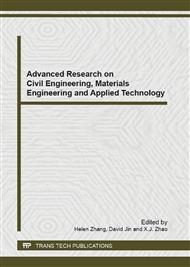p.391
p.395
p.399
p.405
p.410
p.416
p.422
p.426
p.432
On Web Applied Technology with NTP-Based Synchronous Interaction of Bilingual Teaching in Higher Education
Abstract:
With the heavy use of web applied technology in higher education, the Network Teaching Platform or NTP, a positive result of applied technology, has served as a necessary supporting tool for distance learning. Teaching interaction as a bridge between teaching and learning contributes a lot to the success of NTP-based teaching and its occurrence depends on not only technological support but also the design of teaching strategies and methods. Given the particularity of bilingual teaching, the study focuses on NTP-based synchronous group discussion which is both an important form of teaching interaction and a vexed question in distance teaching. A series of teaching strategies are presented in terms of teaching principle, group division, topic design and role assignment of learners and teachers, so as to ensure the smooth functioning of web-based cooperative learning of bilingual teaching.
Info:
Periodical:
Pages:
410-415
Citation:
Online since:
December 2013
Authors:
Keywords:
Price:
Сopyright:
© 2014 Trans Tech Publications Ltd. All Rights Reserved
Share:
Citation:


